Site fidelity, depth-habitat use, and reproductive behavior of ciscoes in Grand Traverse Bay, Lake Michigan
Contributing Authors
Darryl Hondorp (USGS, dhondorp@usgs.gov), Jason Smith (Sault Ste Marie Tribe of Chippewa Indians), Jory Jonas (MIDNR), Ben Turschak (MIDNR), Erik Olsen (GTB), Nathan Barton (USFWS), Kevin Donner (Little Traverse Bay Band of Odawa Indians), Andrew Muir (GLFC)
Project Description
Successful reintroduction of cisco (Coregonus artedi) to the Great Lakes requires that stocked individuals are suitably adapted to environmental conditions at stocking sites. Thus, understanding how cisco ecology, life history, and behavior varies among extant populations living in different physical environments is important for the selection of appropriate brood stock. The thriving cisco population in Grand Traverse Bay (GTB), Lake Michigan, represents a potential source of brood stock for cisco reintroduction efforts in Lakes Michigan and perhaps Lake Huron, but little is known about its ecology and behavior. Our study will generate information on cisco depth-habitat use and spawning activity that can be compared with results from similar studies in Lake Ontario (D. Gorsky, ongoing) and Lake Huron (Holbrook et al., proposed). Differences in cisco behavior and life history among populations in Lake Michigan, Lake Huron, and Lake Ontario would help managers understand how to link donor populations to specific sites in recipient lakes. Additionally, results of these studies will help determine the need for a cisco telemetry study in Lake Superior, which due to its size would require significantly more resources than requested in this proposal. This investigation was developed with input from local tribal communities (Little Traverse Bay Bands of Odawa Indians, Grand Traverse Band of Ottawa and Chippewa Indians) and resource management agencies (Michigan Department of Natural Resources).
